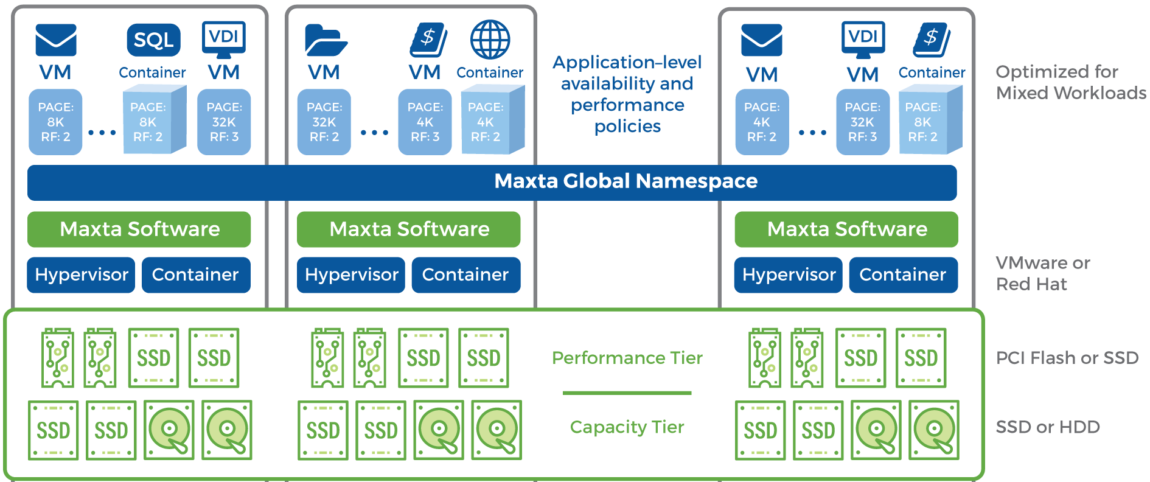Maxta Hyperconvergence Software Architecture
A platform agnostic architecture with application-centric management designed to optimize performance and capacity in the software-defined datacenter.
Maxta’s peer-to-peer hyperconvergence architecture aggregates storage resources from multiple servers, incorporating a global namespace and creating a storage pool. An instance of Maxta software is deployed as a virtual machine or container on each server in the cluster. From the virtualization or DevOps administrator’s perspective, there is a single storage pool for the entire cluster, simplifying VM or container provisioning dramatically. Performance and availability policies assure that each VM or container gets the storage capabilities it needs.

Maxta leverages flash storage resources as a read/write cache for performance (including PCIe, NVMe, or SATA SSDs for performance), and SATA or SAS HDDs or SSDs for capacity. The cache tier can also be deployed with multiple flash devices for redundancy.
Clustering and Unified Namespace
The Maxta architecture presents shared storage at cluster-level visibility. The unified namespace service provides all nodes in the Maxta cluster with visibility to the same hierarchy of objects. Any node in the cluster can modify any of these objects. At any point in time, a minimum of three nodes must be configured to run the unified namespace service, and a majority of those nodes must be online to maintain quorum. Maxta’s high availability services ensure that data remains accessible when nodes fail and can provide greater fault tolerance depending on cluster size, replica policy, and fault containment units made available via Rack Awareness.
Maxta Distributed File System
The highly scalable, resilient Maxta Distributed File System (MFS) is designed to deliver shared storage with enterprise-class services. MFS has been developed for the purpose of meeting the needs of an enterprise hyperconverged virtual environment. MFS eliminates split-brain conditions by synchronizing operations between instances across the cluster. MFS runs on each server in the virtualization cluster to assure availability for the global namespace.
Data Integrity
Maxta uses strong checksum algorithms to prevent against silent data corruption in a virtualized infrastructure (a common problem with storage solutions). Maxta protects against data corruption scenarios by performing checksums at multiple points in the data path. Data integrity is checked whenever the data is stored on a disk, whether that be on flash or when data has been de-staged to spinning disk, and anytime the data is sent across the network. Checksums are validated each time data is read. If an error is found, the Maxta software repairs and recovers the data.


 Maxta Introduces VMware Escape Pod
Maxta Introduces VMware Escape Pod


